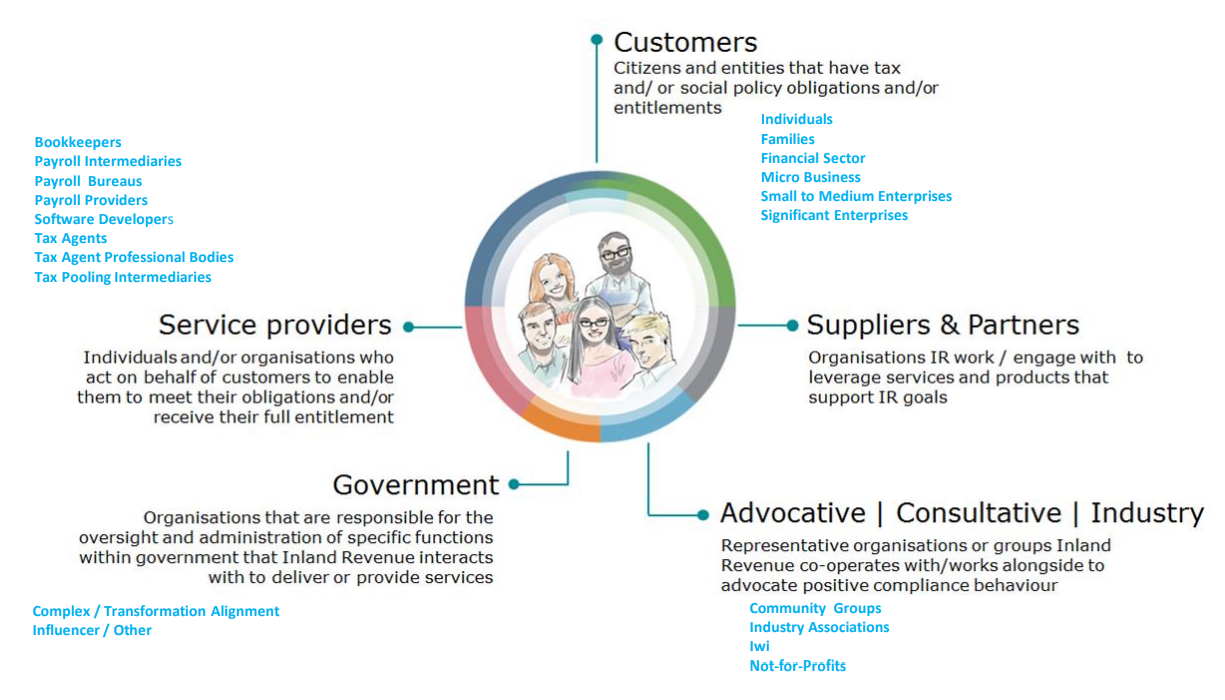The transformation had a dedicated communications team for the duration of the programme.
Each workstream – Core tax and social policy, Intelligence led, Workplace technology, Business integration and transition - had their own communications plans and communications resources, while the Communications and Stakeholder Management Lead was responsible for communications to all internal, customer and stakeholder groups, to ensure that messages were consistent, and timings were aligned.
One of our key communications principles was that we would tell our people first. We recruited individuals into the team who understood programme language and who could turn complex information into content each stakeholder group could relate to.
Communications were extensive and constantly tested and refined with feedback from our customers and our people. We used a number of mediums and channels to reach customers, including digital channels, webinars and social media, and learned and modified as we went along.
START release communications
Comprehensive engagement and communications plans for each release were designed to reach those who were affected by the changes we were making. We repeated the same messages hundreds of times, as we expected that not everyone would understand them the first time, and that some people would be surprised by what the changes meant for them.
For our internal audience, we used many different interventions to counteract change fatigue and keep people’s attention on the change over several years. Creative videos, deep dives and masterclasses, campaigns using internal social media and region events for people leaders, all featured in our campaigns. The content might be complex, but you need as much creativity for programme communications as you do for a public relations campaign.
Communications plans and schedule
A formal communications plan was created for every workstream and release however the informal communication plans on a page, schedules and tactical approaches proved more useful as working documents and to share with busy programme, change and stakeholder managers.
Stakeholder management
Business transformation continued to review and adapt its approach to stakeholder management throughout the transformation in line with change impact assessments and feedback from our many and varied stakeholders.
A new stakeholder strategy and plan was created for each release. While many of the stakeholders were impacted by change throughout the transformation, in line with the product mix, we had to engage with new stakeholders right up to the final release and quickly build their understanding of why we were changing as well as what was about to change.
Understanding our stakeholders better
When we migrated GST to new systems and processes in February 2017, we thought we had put sufficient effort into change management, marketing and communications. However, it became clear that we were nowhere near as effective as we thought we were. As a result, we changed our approach for subsequent releases, as well as bringing customers and stakeholders into the design process, in particular tax agents. Engagement with tax agents increased significantly from 2017 onwards.
Account management
We set up an account management team to improve external customer and stakeholder management following the February 2017 release. From then on, this team became the front door for external stakeholders and customers for the remainder of the programme. The team enabled 2-way, open, honest discussion, communication and feedback, and provided early warning of issues that could impact our external customers before they became widespread or critical. We recruited people with industry knowledge and credibility in these roles, people with proven experience in programme delivery, who could balance conflicting priorities.
Engagement with stakeholder groups was tracked and feedback from the Account Management team was an input into the business readiness assessment ahead of go-live.

Areas of Focus Groups
Further strengthening our management of external stakeholders as we prepared for Release 3 (Tax on Income, Payday filing became mandatory, changes to Working for Families Tax Credits and the introduction of Investment Income reporting), we set up networked teams whose focus was on managing the impacts of change on specific customer groups and our people who supported them.
These groups were business-led and included members of the programme team with an in-depth understanding of the change. The role of the group was to track readiness of our customers and our people ahead of the release, identify risk and issues and ensure mitigations were in place to overcome them.
Post go-live the Area of Focus groups played a critical role in the support model (Pou Whirinaki) reporting on how our customers and our people were coping with the new systems and processes and identifying issues which were then fed into the support process.

